 gmail.com
gmail.com
|
Poster presented at the 73rd Annual Meeting, Society for American Archaeology, March 26-30, Vancouver, BC, Canada.
Larger versions of most images are available by clicking on the image.
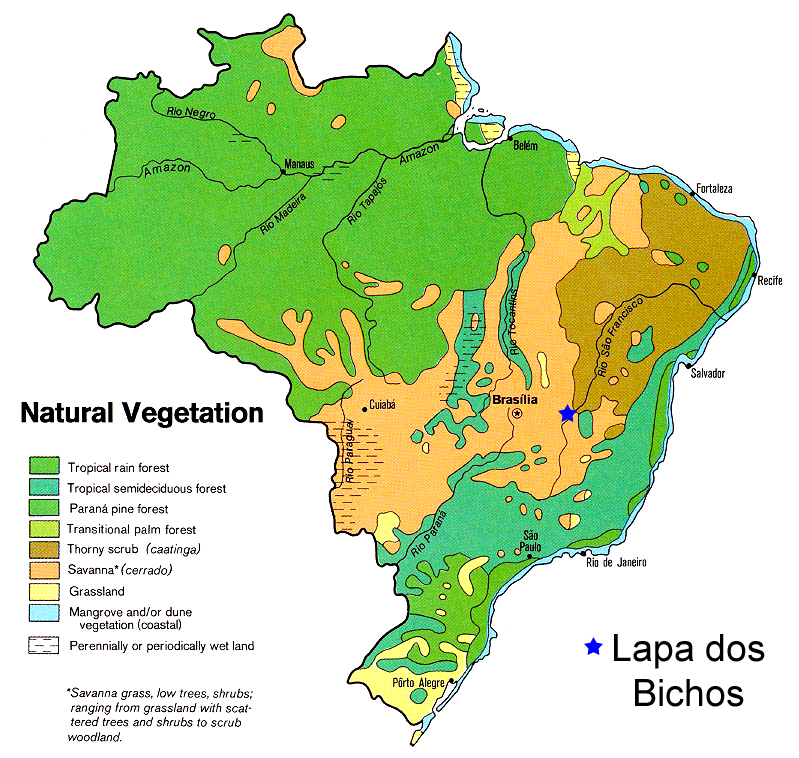
Located in central Brazil in the modern day savanna, Lapa dos Bichos is a rock shelter with amazing preservation of botanical remains. The limestone has created protected living surfaces where preservation could occur. The preservation of botanical remains brought into the shelter is enhanced by both the dry nature of the rock shelter and the six month dry season of the savanna. While the site dates from 11,500 to 500 BP, analysis began with the most recent levels of occupation. Domesticated plants are thought to have been introduced here between 2500 and 2000 BP. Collected botanical remains show that native savanna plants were retained as food sources with the introduction of domesticates.

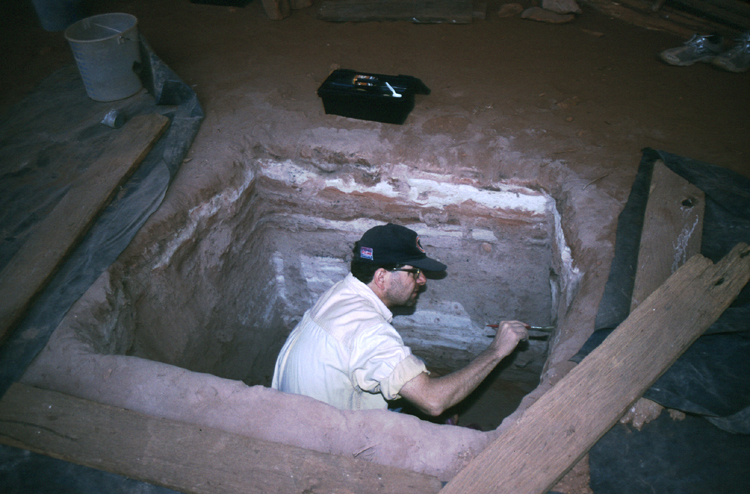
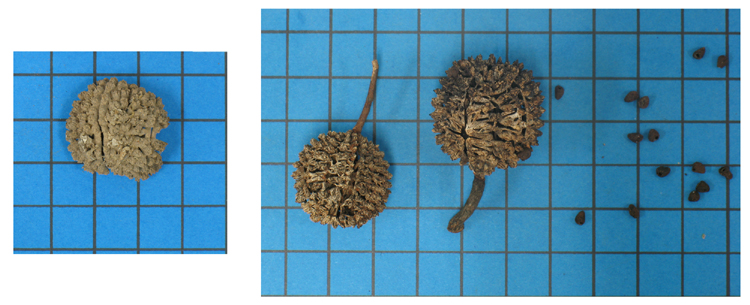
Botanical remains were preserved through both carbonization and desiccation. Most pictures presented here are of desiccated remains as the degree to which the seed structures are visible is greater. The botanical remains found include both domesticated species such as corn, beans, and cassava and native plant foods such as palm kernels, custard apple, and passion fruit.
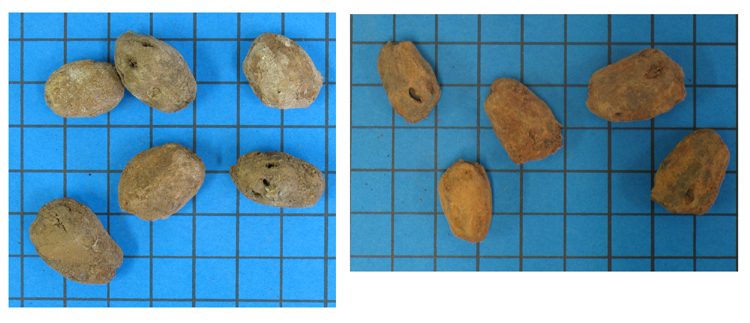

Dating of the agricultural material is limited at present, and so while there might be temporal distinctions between structures or levels 2 and 3, there is no basis upon which to analyze diachronic change.
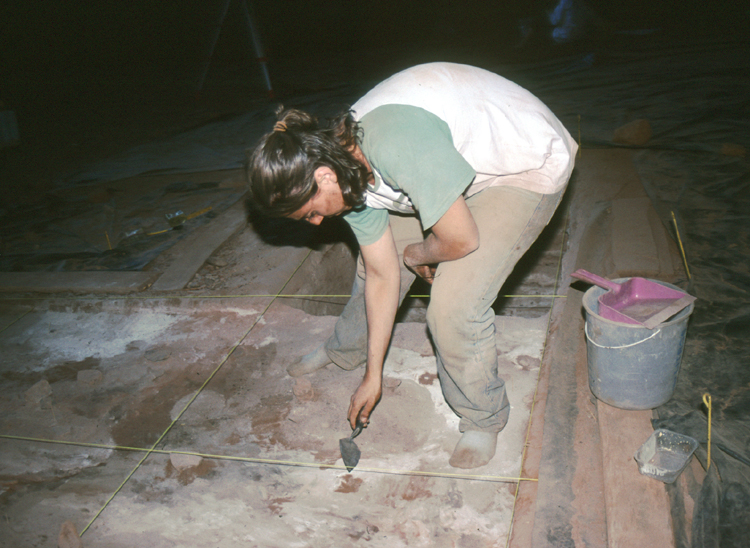
All of the material used in this analysis come from the 2006 excavations. All of the sediment from the shallow pit structures was processed through nested geological screens (down to 0.5 mm) and sediment was collected. Around the structures the sediment varies in hues from red, natural to the soils of the area, to whites where the inclusion of ash is very high. Two liters of sediment from each excavation unit was collected for flotation and the remainder was screened in the field.
Botanical samples come from both the structures, standard excavation, and flotation samples, each of which have distinct limitations. However for prolific species with relatively large seeds, greater than 3 mm diameter, all of the procedures recover the remains. All structure material was sorted in the lab. Meanwhile the botanical remains from the fourteen excavation units were bagged by level and unit in the field.
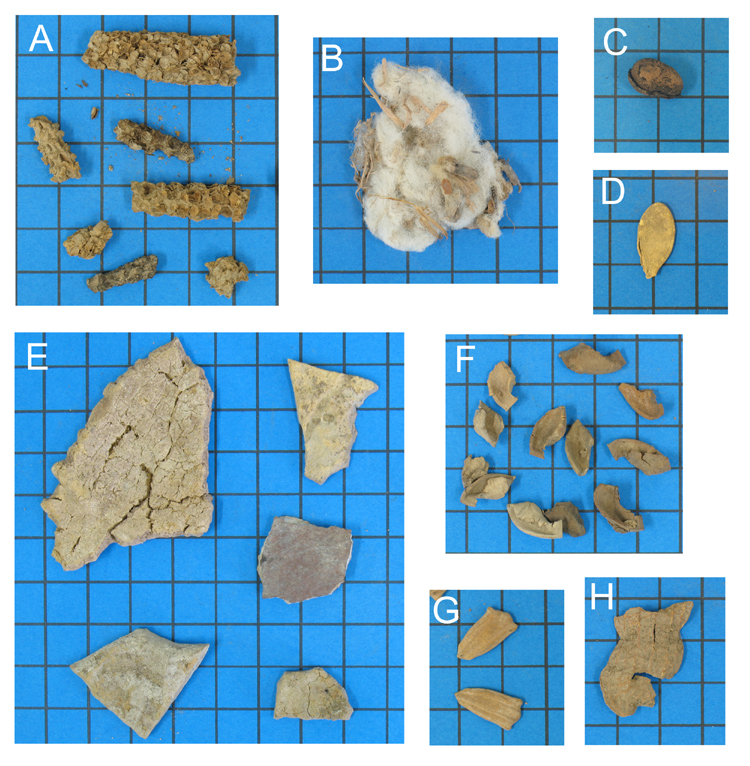
| Foods | Plant parts found | |
|---|---|---|
| A. | Maize | cobs |
| C. | Bean | seeds |
| D. | Squash | seeds |
| F. | Cassava | seed shell |
| H. | Peanut | seed pod |
| Industrial Plants | ||
| B. | Cotton | seeds and fibers |
| E. & G. | Bottle gourd | rinds and seeds |
The native plant species occur in great abundance. There are 50 different native species which have been identified and an additional 200 unknown seed and fruit rind morphologies. The identified plants include species considered to be folk medicine and industrial fiber sources.
Agriculture was adopted by the inhabitants of this site and concurrent local changes in material culture include the introduction of pottery. A local survey documented many additional archaeological sites along the river where soil may have been farmed.
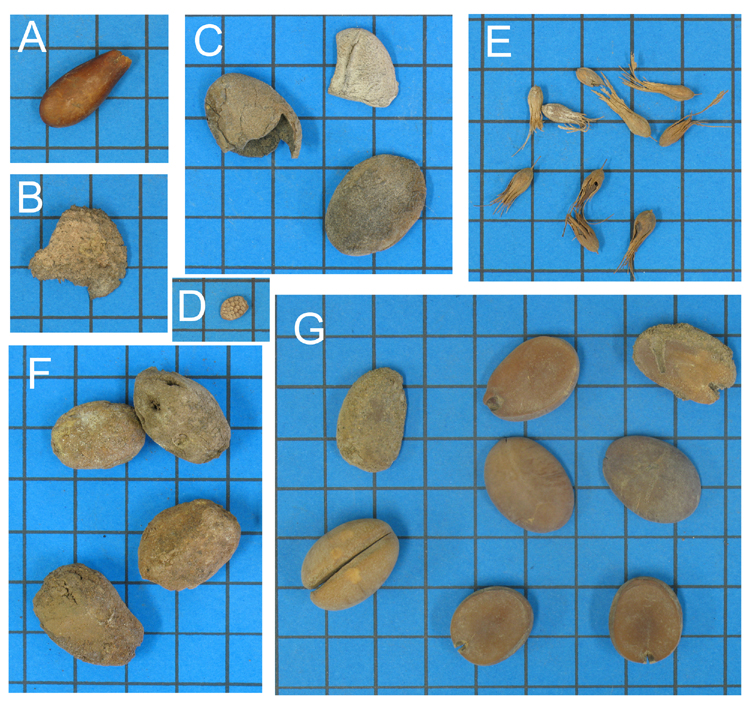
| Foods | Plant parts found | |
|---|---|---|
| 1-3 | Palm nuts | shell |
Syagrus spp., Attalea sp. |
||
| A. | Custard apple | seed |
Annona sp. |
||
| B. | Pequi | seed |
Caryocar brasilensis |
||
| C. | Cansanção | seed and shell |
Cnidoscolous pubescens |
||
| D. | Passion fruit | seed |
Passiflora sp. |
||
| E. | Grass | seed |
Graminae - large seeded specie |
||
| F. | Umbu | seed |
Spondias tuberosa |
||
| G. | Jatobá | seed and pod |
Hymenaea sp. |
||
| Cajá | seed | |
Spondias mombin |
||
| Industrial Plants | ||
| Native cotton | seed | |
Gossipium barbadense |
||
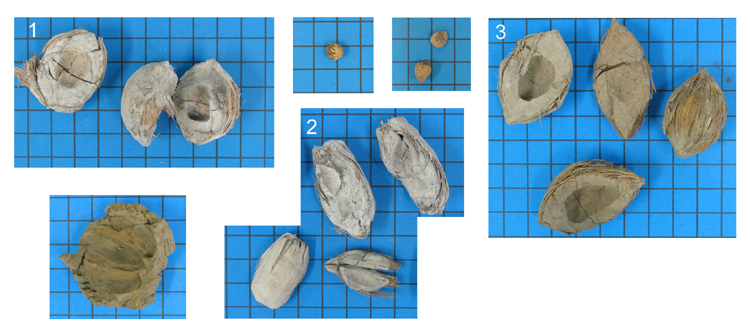
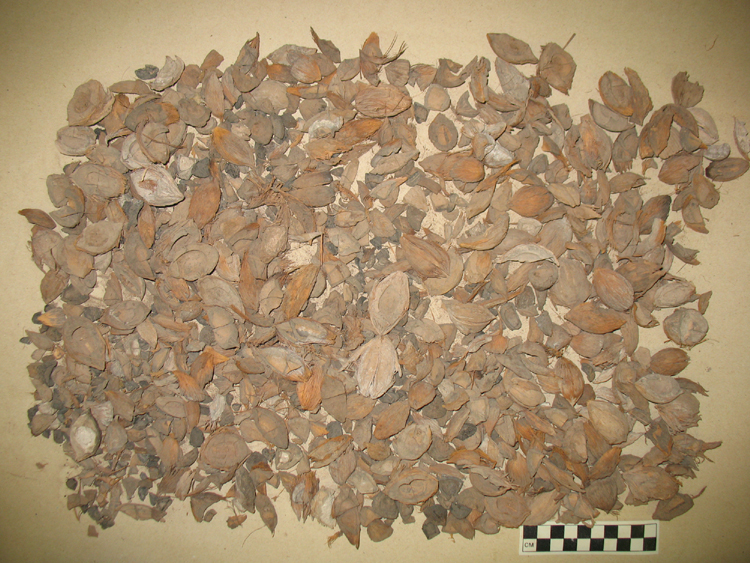
Botanical remains are very common at Lapa dos Bichos. There are both structures and units with two kilograms of palm nut shells. These samples number in the thousands of fragments. Palms are not the only plant where the number of remains is high. There are large quantities of jatobá pods, cansanção shells and corn cobs.
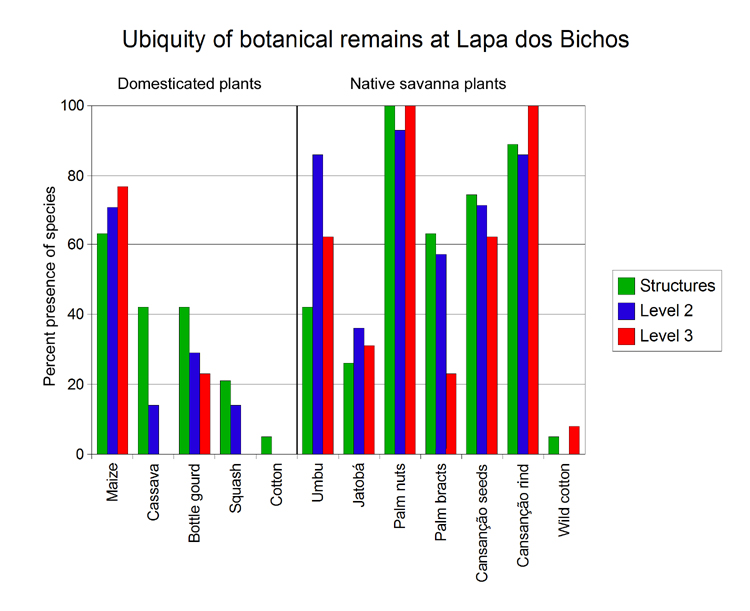
Ubiquity, the percentage of sample locations where a specie is found, gives a measure of specie frequency. Immediately striking is that some native plant species are nearly ubiquitous, being found in most of the structures and excavation units. The relatively even distribution of species between structures and excavation units lends credence to the perspective that the fill of structures are midden materials from the site's inhabitants. The ubiquity of common native plant species and maize is high. Many of the rarer species occur infrequently and have ubiquities similar to cotton and wild cotton.
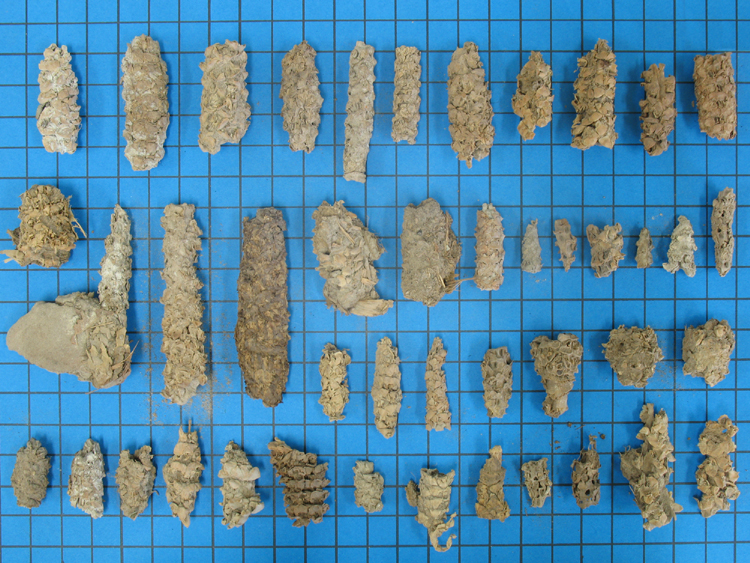
The maize ears from Lapa dos Bichos are extremely variable. The number of rows on an ear varies from four to 12 rows. Cob diameters vary from three to eleven millimeters. The cob is often very fragile, however on some specimens this layer is extremely durable and thick. Maize ears have various arrangements of kernels: spirals, ladder, side by side, or random organizations. The maize from both structures and the excavation units is variable with no patterns that would indicate the development of homogeneous races. The variability within corn ears is curious considering the location of the site within central Brazil far from the Mesoamerican centers of maize domestication. A homogeneous structural type would be expected from a small introduced population.
Many thanks to the Museum of Archaeology and Ethnography at the University of São Paulo and to Mike Jochim.
1 Department of Anthropology, University of California Santa Barbara
2 Department of Biology, Universidade de São Paulo, Brazil
If you would like more information about the ongoing research, please contact the author.
Myrtle Shock: myrtleshock gmail.com
gmail.com
Return to Myrtle's Web Page
Return to Shock Family Web Page